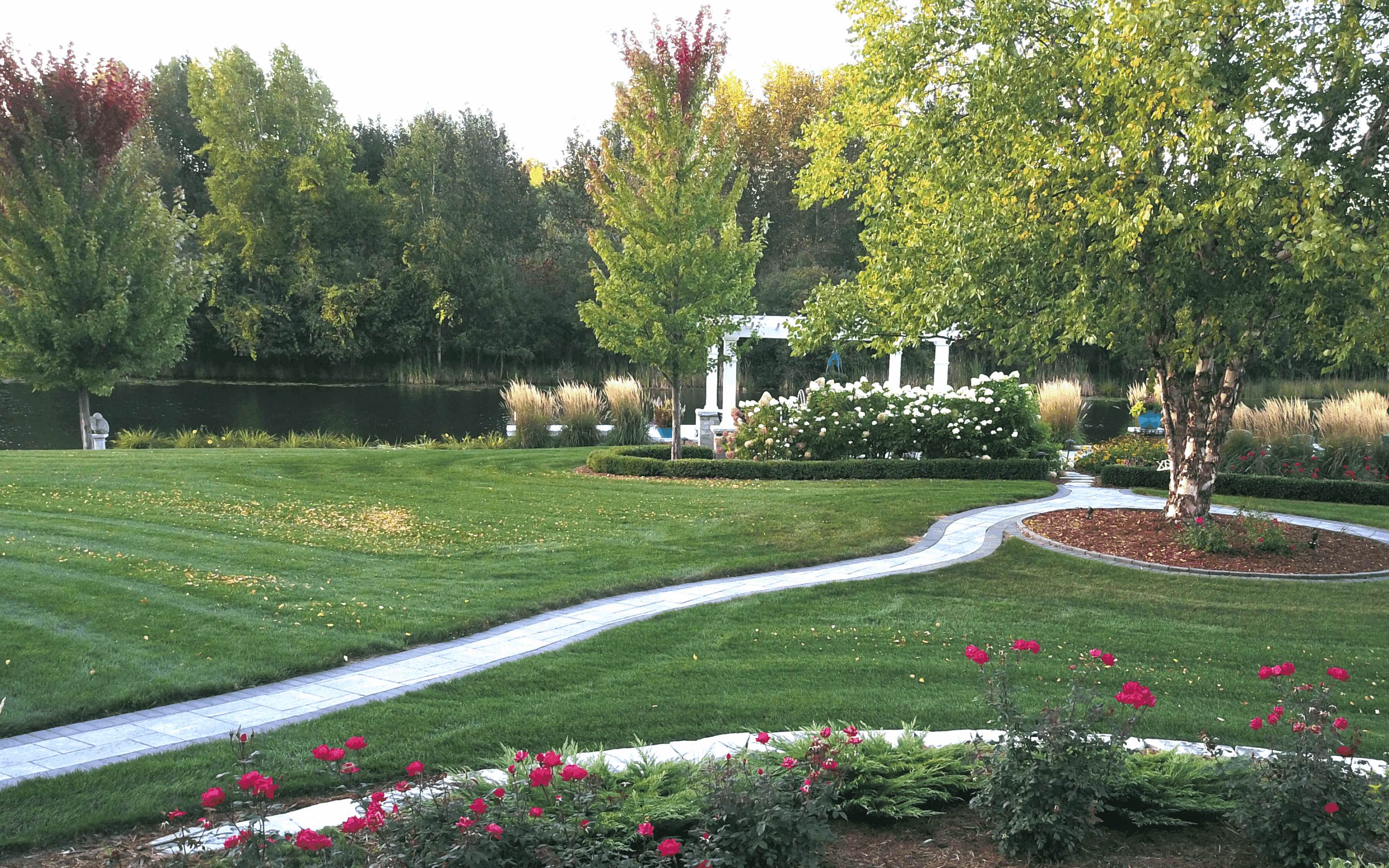After a hot, humid summer, Midland lawns are finally catching a break. With days now in the 60s–70s and cool nights dipping into the 40s, it’s the perfect time to help your lawn recover and prepare for the winter ahead. Early fall is what we call a “sweet spot” for Michigan lawns, cool enough to relieve summer stress, yet warm enough for strong root development.
Here’s your step-by-step checklist of what to do now, and why each task matters:
1. Keep mowing — but adjust the height with the season
Right now (late August into early September), keep your mowing height high, around 3 to 3.5 inches. Taller grass shades the soil, holds moisture, and encourages deeper roots while your lawn recovers from summer heat.
As we move into late September and October, begin lowering the mower gradually until your final cut of the season is about 2.5 inches. This shorter height helps prevent grass from matting under fallen leaves and winter snow, which can lead to snow mold and bare patches come spring.
2. Rake and clear leaves often
Leaves may look pretty scattered across your lawn, but if they’re left to pile up, they block sunlight, trap moisture, and can suffocate grass underneath. That creates perfect conditions for mold and bare spots. Raking weekly, or mulching leaves with your mower, keeps your lawn healthy and tidy.
3. Aerate compacted soil
If you noticed puddling water or spongy thatch this summer, your soil may be compacted. Core aeration pulls out plugs of soil, opening pathways for oxygen, water, and nutrients to reach the root zone. Fall is the best time to do this for cool-season grasses like Kentucky bluegrass and fescue.
4. Overseed thin or bare patches
Summer heat, grubs, or drought may have left spots in your lawn looking thin. Overseeding now allows new grass seed to germinate while soil temperatures are still warm enough, but competition from weeds is low. Aim to seed at least 4–6 weeks before the first hard frost so seedlings have time to establish.
5. Fertilize to strengthen roots
A slow-release, nitrogen-rich fertilizer applied in late summer or early fall helps grass rebuild energy reserves. Unlike spring fertilizing, which feeds fast top growth, fall fertilizer encourages strong roots, making the lawn greener now and better prepared for next spring’s growth surge.
6. Control weeds before winter
Broadleaf weeds like dandelion and clover are actively storing nutrients for winter right now, making them more vulnerable to weed treatments. Tackling them now reduces competition and prevents them from bouncing back strong in the spring.
7. Adjust watering as the season cools
Grass needs less water as temperatures drop and growth slows. Eventually, you’ll want to stop watering after several consecutive freezing nights.
Here’s why:
- When the ground freezes, water can’t soak in and may sit on the surface, creating icy conditions.
- Continued watering can increase the risk of snow mold and other fungal diseases under winter snow cover.
- Grass naturally goes dormant in late fall, extra water at this stage won’t benefit the lawn and only wastes resources.
The general rule is: once daytime highs stay consistently below 50°F and the ground starts to freeze at night, it’s safe to shut down irrigation for the season.
8. Clean and store your equipment
Give your mower and other tools some attention before winter storage. Clean off debris, sharpen blades, and either drain fuel or add a stabilizer. A little prep now saves frustration (and repair bills) when spring arrives.
9. Keep an eye on the weather
With Midland’s forecast showing sunny, mild afternoons for Labor Day weekend and the chance of showers mid-next week, now’s the perfect time to knock out aeration, overseeding, and fertilizing before conditions turn wetter and colder.
Wrapping It Up
We’ve talked in past posts about protecting your lawn from the stress of a hot, humid summer. Now that cooler late-summer days are here, you’ve got the perfect opportunity to restore, repair, and strengthen your lawn before winter.
By mowing at the right height, raking regularly, overseeding, fertilizing, and adjusting water before freezes, you’ll be giving your lawn the healthiest possible start to next spring.
Want help from the experts? Give us a call at 989-835-8260 or click here for a complete lawn evaluation and treatment plan.

